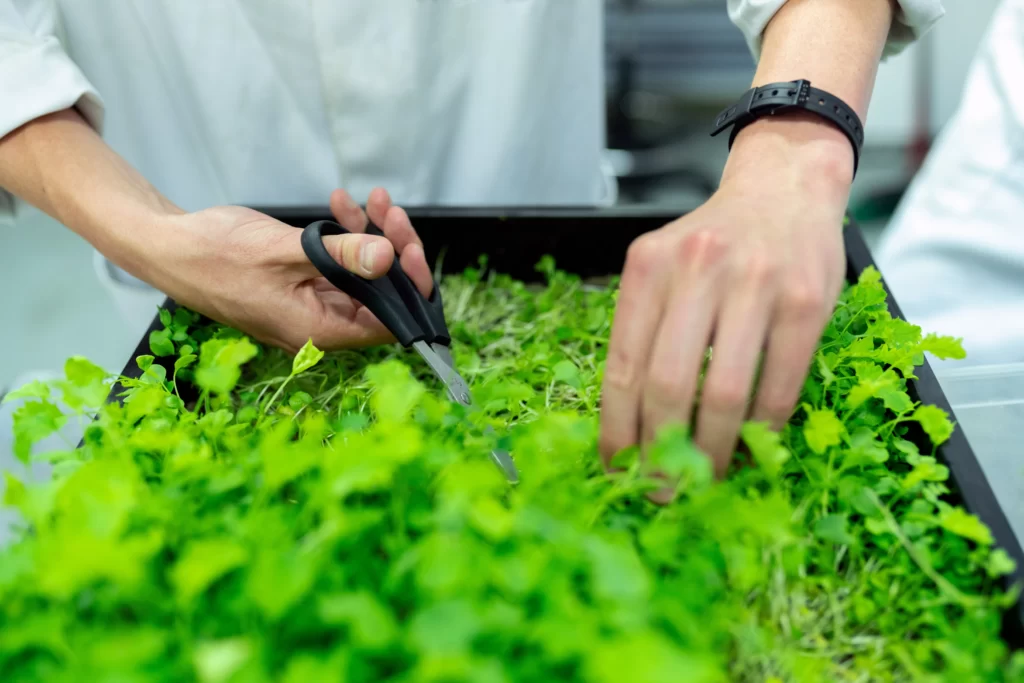Introduction
In the heartlands where technology and nature meet, a remarkable metamorphosis is underway — Artificial Intelligence( AI) in agriculture is revolutionizing husbandry. This community between slice-edge technology and age-old practices is reconsidering how we cultivate, gather, and nourish the world. In this blog post, we claw into the broad changes that AI is bringing to husbandry, propelling it into a period of unequaled effectiveness and sustainability.
The Agricultural Imperative
As global population figures launch towards 9 billion, and climate change disrupts traditional husbandry styles, husbandry finds itself at a crossroads. The need for sustainable, resource-effective practices has now been more critical. Enter AI, armed with the capability to reuse and interpret data at pets beyond mortal capacity, promising to be the catalyst for this metamorphosis.
Precision Agriculture: A New Dawn
Precision agriculture, enabled by AI, is reshaping the way we approach farming. By amalgamating data from satellites, weather stations, and ground sensors, AI algorithms provide farmers with a comprehensive understanding of their fields. This granular insight allows for targeted interventions—precise irrigation, optimized fertilization, and judicious pesticide application. The outcome? Enhanced yields, reduced costs, and minimal environmental impact.
Cultivating Intelligence in Crop Management
AI’s foray into agriculture extends beyond basic resource management. The technology’s prowess in image recognition is harnessed to monitor crop health and detect diseases at an early stage. Drones and sensors equipped with AI algorithms can survey vast fields in minutes, identifying stress indicators invisible to the human eye. This proactive approach equips farmers to take swift remedial action, preventing potential disasters and minimizing crop losses.
Automating Labor and Tasks
AI-driven automation is revolutionizing the very fabric of agricultural labor. Autonomous tractors and robotic harvesters, operating with remarkable precision, are becoming commonplace. These machines navigate fields, plant seeds, and gather crops with minimal human intervention. This technological stride not only addresses labor shortages but also optimizes the timing of operations, leading to improved overall efficiency.
The Power of Predictive Analytics
The real magic of AI lies in its ability to predict. With access to historical data, climate patterns, and market trends, AI can forecast potential challenges and opportunities. Farmers armed with predictive insights can make informed decisions about crop choices, planting times, and market strategies. This not only enhances yields but also boosts profitability, as decisions are rooted in data rather than speculation.
Challenges and the Road Ahead
Embracing artificial intelligence in agriculture comes with its own set of challenges. Data privacy concerns, the digital divide in rural areas, and the initial investment required are all considerations. It’s essential to ensure that AI-driven advancements are accessible to all farmers, irrespective of the scale of their operations. Collaborative efforts between tech innovators, policymakers, and farmers are pivotal in overcoming these hurdles.
Envisioning the Future
The trajectory of AI in agriculture holds exciting prospects. As AI continues to evolve, we can anticipate even more sophisticated applications. Predictive models could anticipate disease outbreaks, suggest personalized crop management strategies, and offer insights into developing climate-resilient crops.
Conclusion
The marriage of AI and agriculture signifies a seismic shift—a revolution driven by data, precision, and innovation. As we stand at the threshold of this metamorphosis, it’s clear that AI isn’t simply an asset; it’s the bedrock of a more flexible, productive, and sustainable agrarian sector. This trip towards a smarter, greener future is propelled by the determination to nourish both our growing global population and the earth we call home.



